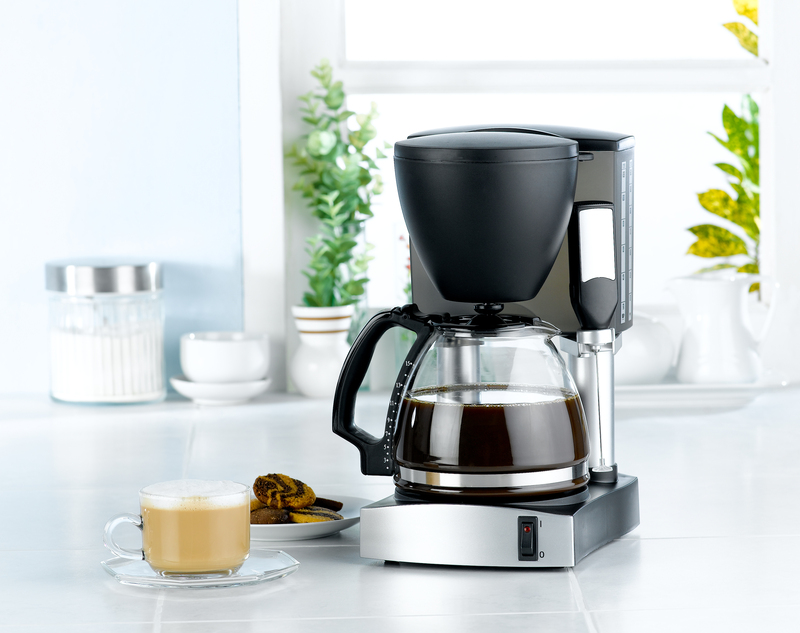Professional Insights for Effective Car Cleaning
Posted on 27/09/2025
Professional Insights for Effective Car Cleaning
Discover expert tips and practical advice for effective car cleaning that goes beyond the basics! Whether you're a car enthusiast or simply want to maintain the value and appeal of your vehicle, these professional insights will transform your car cleaning routine into a rewarding, satisfying, and efficient experience.

Why Effective Car Cleaning Matters
While some see car cleaning as a cosmetic ritual, professional detailers know it's an integral part of vehicle maintenance. Not only does a clean vehicle look stunning, but it is also more protected from the wear and tear of daily driving. Thorough car cleaning preserves the exterior finish, keeps the interior fresh, and helps retain resale value.
Key Benefits of Regular Car Cleaning
- Prevents paint damage: Removing dirt, dust, bird droppings, and environmental contaminants stops them from etching and dulling your vehicle's paintwork.
- Enhances vehicle longevity: Clean engines, interiors, and exteriors all contribute to your car's longevity and mechanical health.
- Boosts mental well-being: A tidy car interior impacts your mood, focus, and overall driving experience.
- Improves safety: Clean windows and mirrors ensure optimum visibility while driving.
Essential Tools for Professional Car Cleaning
Before diving into techniques, it's vital to understand the tools and products recommended by professionals for efficient and safe auto cleaning:
- Two-bucket system: One for washing, one for rinsing, to prevent cross-contamination.
- Microfiber towels and mitts: Gentle on paint, these prevent scratches and swirl marks.
- pH-neutral car shampoos: Designed specifically for automotive paintwork without stripping waxes or sealants.
- High-quality vacuum cleaner: For thorough interior cleaning, including carpets and upholstery.
- Detailing brushes: For reaching vents, seams, and hard-to-clean areas.
- Glass cleaner and window towels: For streak-free transparency.
- Wheel cleaner and tire brush: Dedicated tools for removing brake dust and road grime from wheels.
Step-by-Step Guide to Effective Car Cleaning
Utilizing auto cleaning best practices maximizes your results. Use these recommended steps, employed by professional detailers, for thorough car cleaning:
1. Preparing Your Vehicle
- Choose a suitable location: Shade is preferable. Direct sunlight can cause water spots and make cleaning solutions dry too quickly.
- Remove personal items: Clear out the interior to make thorough cleaning possible.
- Open all doors and trunk: Allow air and light to expose dirty areas and speed up the drying process.
2. Exterior Washing Techniques
Exterior detailing is best approached from the top down:
- Rinse the vehicle: Loosen surface dirt by hosing down the entire exterior, including undercarriage and wheel wells.
- Use a two-bucket method: One bucket contains soapy water; the other holds clean water for rinsing your mitt after each panel. This reduces the risk of scratches.
- Work in sections: Divide the vehicle into manageable areas (roof, hood, sides, trunk).
- Wash from top down: Gravity causes contaminants to move lower--leave the dirtiest sections (like the lower doors and bumpers) for last.
- Clean wheels and tires separately: Use a dedicated brush and wheel cleaner for stubborn brake dust.
- Rinse thoroughly: Don't allow soap to dry on the paint; rinse each section as you complete it.
- Dry with microfiber towels: Avoid air-drying, which can leave water spots. Use blotting motions for best results.
3. Detailing the Interior
- Vacuum thoroughly: Seats, carpets, mats, trunk, and under the seats. Use crevice tools for hard-to-reach spots.
- Clean and condition upholstery: Use appropriate cleaners for leather or fabric seats, and always test in an inconspicuous spot first.
- Wipe down surfaces: Dashboards, center console, door panels, and cup holders gather dust and grime. Use a mild interior cleaner and a microfiber cloth.
- Clean vents and trim: Detailing brushes are perfect for air vents, seams, and textured surfaces.
- Sanitize touchpoints: Pay attention to steering wheels, gear shifters, and switches for a hygienic finish.
4. Streak-Free Windows and Mirrors
- Use an automotive glass cleaner: Household glass cleaners may contain ammonia, which can dry out seals and damage tint.
- Wipe with a clean microfiber towel: Employ overlapping, horizontal and vertical strokes.
- Don't forget the inside: Interior glass often gets hazy from off-gassing materials within the car.
5. Final Touches: Protect and Enhance
- Apply wax or sealant: Protect your paintwork with a coat of wax or synthetic sealant. This also boosts shine and makes future washes easier.
- Dress tires and trim: Use water-based dressings for a low-sheen, authentic finish.
- Deodorize the interior: A professional-grade odor eliminator keeps your car smelling as fresh as it looks.
Professional Tips for Superior Car Cleaning Results
- Avoid harsh chemicals: Household cleaners can damage car finishes and interiors. Always use products specifically designed for automotive use.
- Work in the shade: Prevent premature drying of products, which can lead to streaks and water spots.
- Use dedicated towels for paintwork, wheels, and windows: Cross-contamination can introduce grit and cause scratches.
- Refresh your supplies: Old or overloaded sponges and towels lose their cleaning ability and may retain dirt that scratches surfaces.
- Protect your hands: Wear gloves when using strong cleaners or chemicals.
Common Car Cleaning Mistakes--and How to Avoid Them
- Using a single bucket: This spreads dirt around the vehicle, risking abrasions. Always use a two-bucket method.
- Skipping pre-rinse: Not rinsing off loose dirt can cause swirl marks as you wash.
- Overusing product: More soap does not always mean more cleaning power and can be hard to rinse off.
- Neglecting regular maintenance: The longer contaminants sit, the harder they are to remove--and the more damage they cause.
- Using abrasive towels: Paper towels or rough fabrics can scratch glass and paint.
Advanced Techniques for Efficient Car Cleaning
Take your auto cleaning routine to new heights by incorporating some advanced strategies from professional detailers:
Clay Bar Decontamination
Even after washing, your car's paint can feel rough due to bonded contaminants. Clay barring pulls out embedded grit, resulting in a glassy-surfaces finish. Always follow with polish or wax for optimal protection.
Paint Correction
Micro-scratches, swirls, and minor oxidation can be removed with machine polishing. While this is often best left to professionals, many enthusiasts use a dual-action polisher and appropriate compounds to restore paintwork to near-showroom condition.
Steam Cleaning for Interiors
Steam cleaning kills bacteria and effortlessly lifts stains from upholstery, carpets, and vents without saturating surfaces with moisture.
Use of Quick Detailers & Spray Sealants
To maintain shine between washes, experts recommend quick detailing sprays or spray-on sealants. These products add gloss and renew the protective layer in just a few minutes.
Eco-Friendly Car Cleaning Practices
Environmental consciousness is becoming a focal point--even for professional car cleaning:
- Choose biodegradable soaps and cleaners: These break down safely without threatening aquatic life or the water supply.
- Minimize water use: Try waterless washes or rinseless washes for maintenance cleaning, especially during droughts.
- Dispose of waste properly: Never wash oil, degreasers, or strong chemicals down storm drains.
Maintaining a Clean Car: Proactive Habits
Consistent car cleaning and detailing is easier when you integrate these habits into your routine:
- Shake out floor mats weekly to prevent dirt accumulation.
- Wipe down your dashboard and steering wheel regularly to reduce dust buildup.
- Carry a trash bag in the car to limit clutter.
- Address spills and stains immediately before they set in.
- Avoid eating inside the car to reduce crumbs and odors.

Frequently Asked Questions About Professional Car Cleaning
- How often should I wash my car?--Ideally, every two weeks, though frequency can increase with driving conditions and climate.
- What is the best way to remove stubborn stains?--Identify the stain and use targeted products; for example, enzyme cleaners for organic materials, or rubbing alcohol for ink marks.
- Do automated car washes harm paint?--Some do, especially older brush systems. Touchless washes are gentler, but nothing beats a proper hand wash for car paint preservation.
- Is waxing necessary?--Yes! Wax or sealant provides a protective layer that repels moisture, UV rays, and contaminants.
- Can I use household cleaning products on my car?--Avoid this where possible. Car-specific cleaners are pH-balanced for safe use on automotive surfaces.
Conclusion: Achieve Professional-Quality Car Cleaning at Home
Unlocking the secrets to effective car cleaning doesn't require expensive gadgets or a degree in auto detailing--it's about using the right techniques, tools, and products with attention to detail. Regular cleaning not only maintains your vehicle's beauty but also its value and longevity. By following these professional insights, you can elevate your car cleaning game and take pride in a pristine ride every day!
Whether you're a weekend warrior or a daily driver, these professional car cleaning tips ensure your vehicle always looks--and feels--its best. Don't wait for dirt and damage to build up. Invest a little time for big returns with a car that's spotless, protected, and ready for the road ahead.




